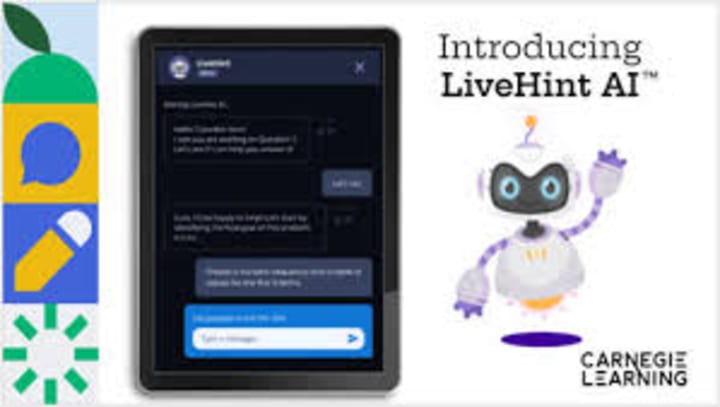Enhancing Mathematics Learning with Technology and AI
How To Conquer Math
Mathematics is a foundational subject essential for various fields, from science and engineering to economics and technology. Despite its importance, many students struggle with math, finding it abstract and challenging. Recent advances in technology and artificial intelligence (AI) offer promising solutions to improve mathematics learning, making it more interactive, personalized, and effective. This article explores how technology and AI can transform math education, supported by recent academic research.

Personalized Learning Experiences
One significant advantage of AI in education is its ability to provide personalized learning experiences. Traditional classrooms often follow a one-size-fits-all approach, which can leave some students behind. AI-powered platforms adapt to each student's learning pace and style, offering customized lessons and exercises. According to a study by Luckin et al. (2016), AI tailors educational content to individual needs, helping students grasp complex concepts at their own pace. By analyzing data on student performance, AI can identify areas where a student struggles and provide targeted interventions, enhancing understanding and retention.
Interactive and Engaging Content
Technology can make learning mathematics more interactive and engaging. Digital tools such as educational games, simulations, and virtual manipulatives allow students to explore mathematical concepts in a hands-on manner. For instance, virtual reality (VR) and augmented reality (AR) create immersive environments where students can visualize and interact with abstract math concepts, making them more concrete. A study by Merchant et al. (2014) found that students using interactive digital tools showed significant improvement in their math skills compared to those using traditional methods. These tools not only make learning fun but also deepen conceptual understanding by providing immediate feedback and allowing students to experiment with different scenarios.

Intelligent Tutoring Systems
Intelligent Tutoring Systems (ITS) are AI-driven applications designed to provide personalized tutoring to students. These systems use machine learning algorithms to analyze student responses and offer real-time feedback and guidance. One notable example is Carnegie Learning's MATHia, an AI-based tutor that adapts to student needs and provides personalized practice and instruction. A study conducted by Pane et al. (2014) demonstrated that students who used MATHia showed significant gains in their math performance compared to those who received traditional instruction. ITS can simulate one-on-one tutoring experiences, helping students develop problem-solving skills and conceptual understanding.
Data-Driven Insights
AI and technology enable educators to gather and analyze vast amounts of data on student performance. This data provides valuable insights into teaching effectiveness and student learning patterns. For example, learning analytics can identify common misconceptions and areas where students struggle the most, allowing educators to adjust their teaching strategies accordingly. According to a report by the U.S. Department of Education (2012), data-driven instruction can lead to improved student outcomes by informing targeted interventions and instructional adjustments. By leveraging data, teachers can make informed decisions to enhance the learning experience and address individual student needs.
Collaborative Learning and Peer Support
Technology also facilitates collaborative learning and peer support, essential components of effective math education. Online platforms and social media allow students to connect, collaborate, and share knowledge. For instance, platforms like Khan Academy and Mathway provide forums where students can ask questions, share solutions, and learn from each other. A study by Roschelle et al. (2010) found that collaborative learning environments, supported by technology, promote deeper understanding and engagement in mathematics. By fostering a sense of community and collaboration, technology can help students learn from their peers and develop critical thinking skills.

Challenges and Considerations
While technology and AI offer numerous benefits for math education, they also present challenges that need to be addressed. Issues such as data privacy, the digital divide, and the need for teacher training are critical considerations. Ensuring that all students have access to technology and that educators are equipped to integrate these tools effectively is essential for maximizing the potential of AI and technology in education.
Conclusion
Incorporating technology and AI into mathematics education holds great promise for improving learning outcomes. Personalized learning experiences, interactive content, intelligent tutoring systems, data-driven insights, and collaborative learning are just a few ways these advancements can enhance math education. Supported by recent academic research, it is evident that technology and AI can make math more accessible, engaging, and effective for students of all levels. As we continue to innovate and integrate these tools, the future of math education looks bright, promising better understanding and appreciation of this critical subject.
References
Luckin, R., Holmes, W., Griffiths, M., & Forcier, L. B. (2016). Intelligence Unleashed: An Argument for AI in Education. Pearson.
Merchant, Z., Goetz, E. T., Cifuentes, L., Keeney-Kennicutt, W., & Davis, T. J. (2014). Effectiveness of virtual reality-based instruction on students' learning outcomes in K-12 and higher education: A meta-analysis. Computers & Education, 70, 29-40.
Pane, J. F., Griffin, B. A., McCaffrey, D. F., & Karam, R. (2014). Effectiveness of Cognitive Tutor Algebra I at Scale. Educational Evaluation and Policy Analysis, 36(2), 127-144.
U.S. Department of Education. (2012). Enhancing Teaching and Learning Through Educational Data Mining and Learning Analytics: An Issue Brief.
Roschelle, J., Penuel, W. R., & Shechtman, N. (2010). Co-design of innovations with teachers: Definition and dynamics. Annual meeting of the American Educational Research Association, Denver, CO.
About the Creator
David Snam
Greetings, I'm David Snam, a passionate storyteller weaving narratives that resonate with the heart and mind. My tales blend the surreal with the everyday, inviting you to explore worlds where the ordinary transforms into the extraordinary.
Enjoyed the story? Support the Creator.
Subscribe for free to receive all their stories in your feed. You could also pledge your support or give them a one-off tip, letting them know you appreciate their work.






Comments (1)
Thank you for the interesting and delicious content. Follow my story now.